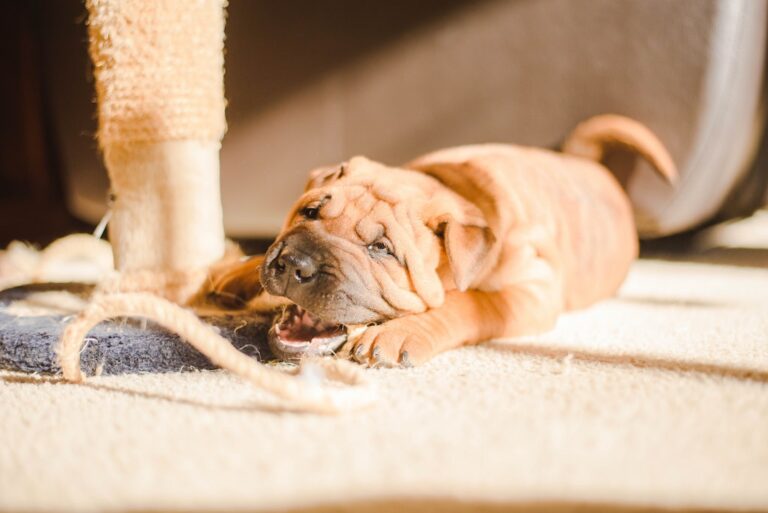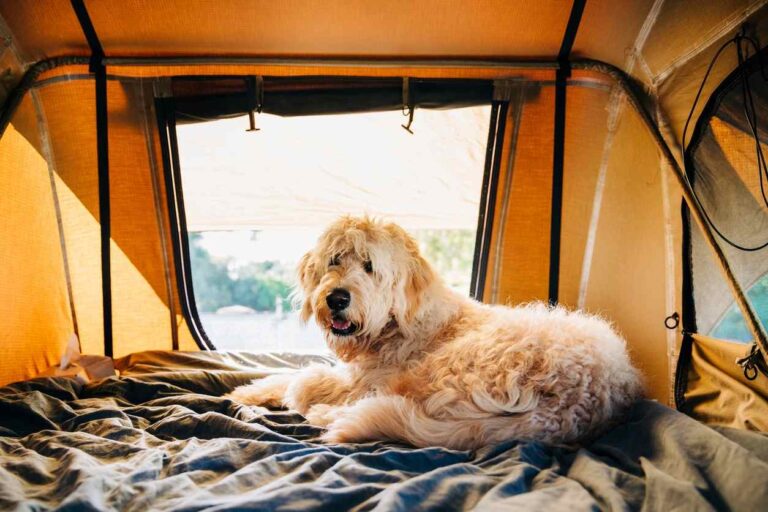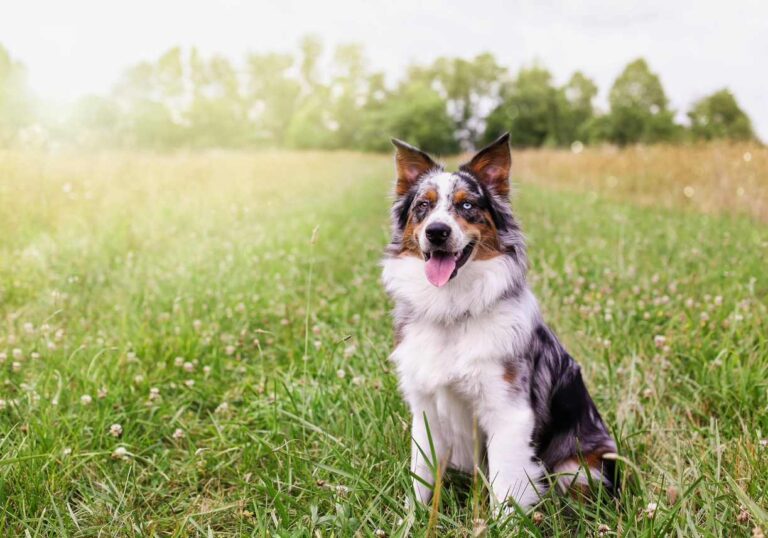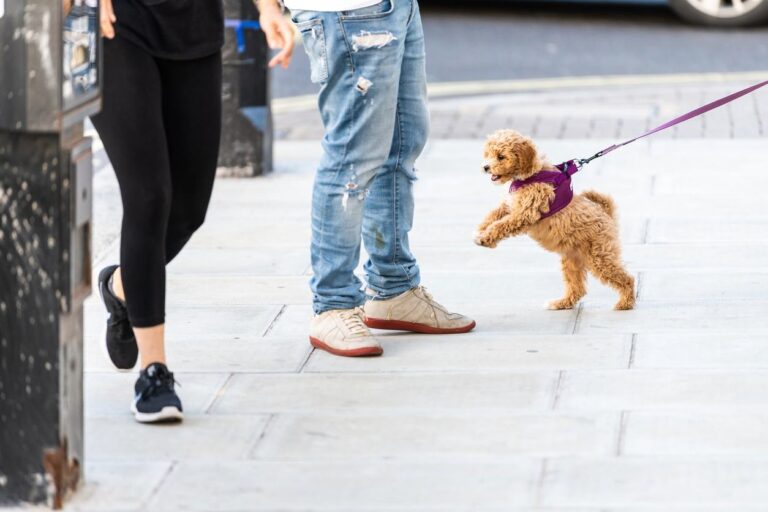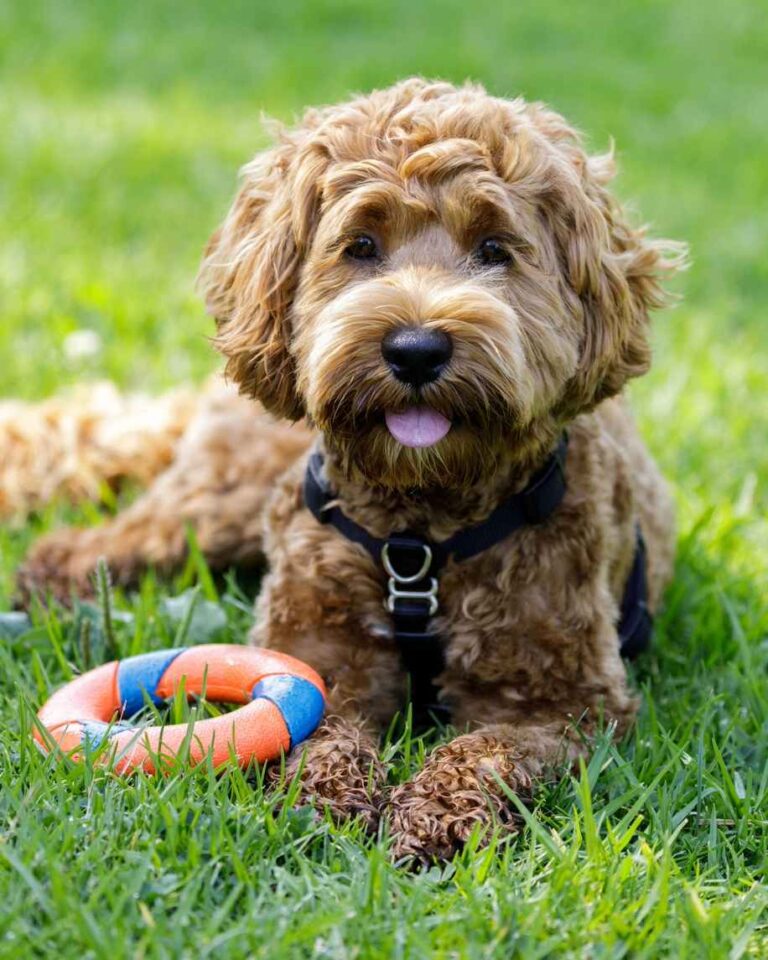We all love our puppies, however, we are also all too familiar with the shock of walking into the next room and finding your couch cushion has been chewed through, or your child’s favorite stuffie has quietly seen its last days and is reduced to pieces on the living room floor. You have a ton of toys laid out for your puppy, and you are entertaining them for what can feel like all day, so what gives? Why do some puppies engage in destructive chewing and how can we reduce the behavior?
Puppy chewing is definitely normal. All 28 of your puppy’s baby teeth should have come in around 5-6 weeks of age when they are still with mom and their littermates. By the age of 12-16 weeks, you may find rice-sized puppy teeth around the home, which is totally normal as your puppy is now losing those razor-sharp puppy teeth and gaining their permanent adult teeth. During this time, your puppy is probably seeking out things to chew on to help reduce any discomfort they are experiencing. This is why it is so important that as their pet parent, you establish early boundaries and expectations of what is appropriate to chew on and what is not. Every puppy is different in how “long” the chewing lasts. It’s difficult to say if a puppy will simply “grow out” of chewing. In many cases, it’s easy for destructive chewing to turn from chewing to soothe, to chewing for the fun of being destructive and ripping things apart as they get older. Destructive behavior can not only be upsetting to you as the owner because you may have to replace items of value in your home, but it can also be dangerous or even deadly for your puppy, as they could ingest something that could cause choking or a blockage in their airways or digestive system. In order to discourage inappropriate chewing and destructive behavior as your puppy ages, we are going to lay out some management strategies and our trainer’s favorite list of toys to offer your puppy from Day 1.
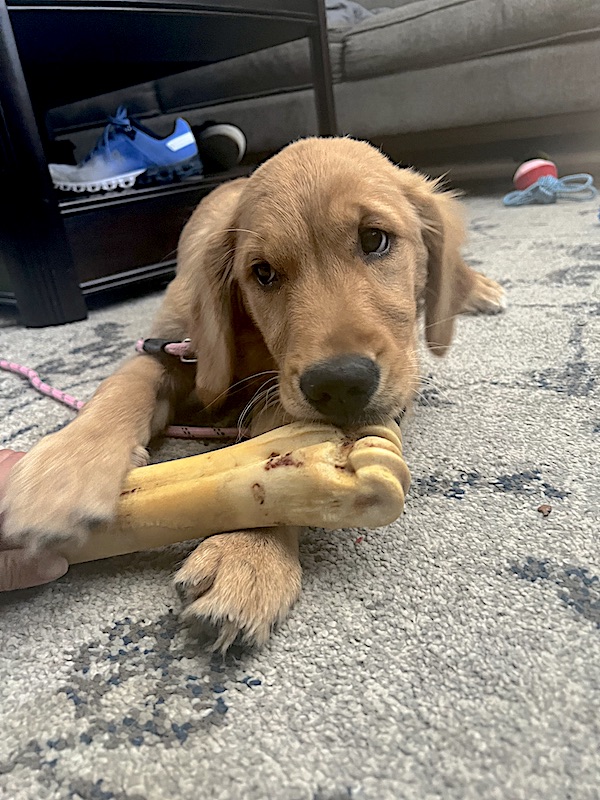
Watch or Confine
One of the most important parts of reducing puppy chewing is the overall management of their behavior and eliminating opportunities for them to engage in inappropriate or destructive chewing at all times if you cannot watch them. Chewing is a tangibly reinforced and maintained behavior. Simply put, chewing is self-reinforcing, and the more your puppy has the opportunity to inappropriately chew, the more they will continue to engage in the behavior in the future. To manage chewing, you must be able to keep a close eye on your puppy at all times or they need to be placed in a safe space. Crate Training is something we encourage from Day 1 to reduce chewing and to manage other puppy behaviors such as play-biting and housebreaking. Using a crate will offer you peace of mind that you can step away from the home or go into the shower without having to be concerned about your puppy getting into trouble. Be sure to leave a couple of appropriate toys in their kennel and nothing they can rip up (no blankets, beds, etc.) to set them up for success. Two other options you can use to manage your puppy without fully putting them away are to place them in an exercise pen in eyesight of you, or you can tether them with a 6tft leash to something they cannot move nearby such as a table or chair. Be sure when using the exercise pen or tethering options to offer them a few appropriate toys in access. If you choose to tether, you will need to keep an eye on them in case they try to start chewing on their leash. We recommend a chain leash to discourage chewing on the leash if you find it is a recurring problem.
Appropriate Toys
We have often mentioned offering appropriate toys. So what does that mean? When we say appropriate versus inappropriate, appropriate toys are toys that your puppy will be able to easily distinguish between other items in the home, and ones they will be allowed to chew on at any time. Appropriate toys we recommend are durable Nylabones, deer antlers, natural cow bones, femurs, and Kong products. Be sure to choose a size of toy large enough that your puppy cannot choke or ingest it. Toys we recommend temporarily discontinuing until they are older and no longer engaging in destructive chewing are rope toys and stuffed animals. The reason you will want to avoid these toys, for now, is although they are typical favorites for your puppy, they encourage tugging and ripping, which are the start of destructive chewing behavior. At this point, your puppy cannot distinguish between their rope toy ends and that tassel rug on the floor, or their favorite stuffed animal and your daughter’s favorite teddy bear. It is best to choose toys that are indestructible and don’t resemble or have similar substrate features to household items. Avoid split antlers of any kind and rawhides for life, as these pose risks of choking and tearing of the stomach at any age. If you are interested in some examples of toys we like, check out our puppy supply list. Be sure your puppy has at least 6-10 appropriate toys in access at all times.

What to do when your puppy does chew inappropriately
Even after you have everything needed to set you and your puppy up for success, it is likely that your puppy will still try to engage in chewing inappropriate items such as your shoes, the couch, or paper products. If at any point your puppy begins to chew on something they should not be, step in immediately and get them to stop, then redirect them towards an appropriate toy. We would recommend that your puppy drags a leash around the home so that you can easily and quickly stop them from chewing and move them away from the item as needed. If there is an inappropriate item nearby and your puppy redirects themselves or chooses an appropriate toy instead, be sure to give BIG praise and reinforcement for it.
Enrichment and encouraging play with appropriate toys
If you feel that you are having trouble getting your puppy to successfully chew on the new appropriate items, check out our video. One of our owners, Sean Savage BS, CDBC, CPDT-KA, takes you through how to encourage your puppy to engage in their new toys. You can also review the exercise on how to teach your puppy to engage in their toys in writing by owner and founder Dr. Kristyn Savage, PhD, CAAB, BCBA.
With the above in mind, there is a chance you have a super-active puppy who may need some additional enrichment and activity to burn off some steam. If this is the case, feeding your puppy out of a puzzle toy or kong feeder, frozen treats, taking your puppy on long walks, play times with other friendly and vaccinated dogs, playing fetch in the yard, and training sessions can offer additional ways to provide mental stimulation and energy burn. We have gone into more detail about indoor enrichment options for you here.
With all of the above tools, if at any point you notice that your puppy is excessively destructive, hides or hovers over items, struggles to release items, and/or ingests the items, we would recommend you reach out to your local behavior consultant for additional assistance. They will be able to flag any other behavior concerns such as resource guarding that may be occurring and offer adjusted management and training suggestions to best fit your needs.
